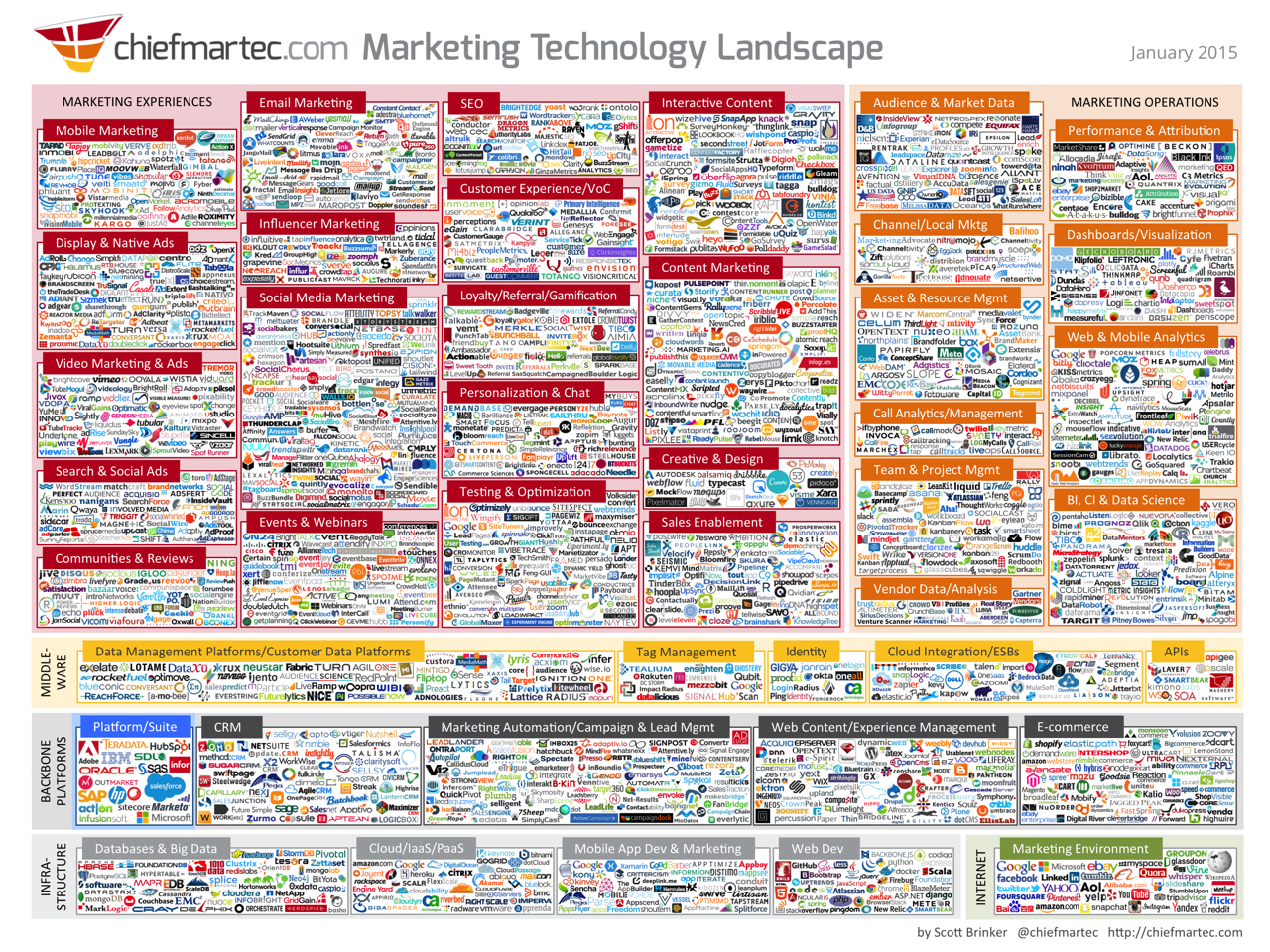According to ChiefMarTec, in 2015 there are 1875 marketing technology companies, up from 947 last year. If the number of marketing software companies is any indication, there is a huge expansion in the number of SaaS companies in almost every segment including sales tools, engineering productivity, finance, and human resources.
This fragmentation trend has been happening for quite some time. In the old model of software procurement, companies would call one of the large software monoliths (Oracle, SAP, IBM, etc) and negotiate an enterprisewide license for a software suite to serve the majority of their departments. These suite offerings promised simplified negotiation and procurement, a single integrated platform with free data interchange across departments, and one point of support. But, this promise was never fulfilled. For example, according to a recent study by Panorama Consulting Solutions, the average ERP implementation requires 16 months to deploy and 20% of them are considered failures.
The alternative, which is the fragmented market of today, enables teams to purchase best-of-breed point solutions, try them, and quickly cycle through all the different offerings until they find the best one for their needs. This change in purchasing behavior is happening broadly across SaaS. If you speak to a VP of Sales a fast-growing startup, you often hear them talk about their sales stack, the collection of different software their account executive views. It’s not just CRM that salespeople use anymore, but sales orchestration, lead generation, configure price quote software, and so on. The marketing team also has their proprietary software stack with marketing automation, lead scoring, attribution, and many other categories. So does human resources: applicant tracking, employee engagement, goal setting…
These department specific software stacks serve their customers much better than a single suite ever could, because each team in each company can select precisely the products that offer the features that meet their specific needs. and if requirements should change, it’s as simple as canceling a subscription, and starting with another product.
Data mobility enables these department software stacks to exist. While the monolithic software suite never fulfilled their promise of easy data movement across different applications, point solutions do because many of them have robust APIs which allow bilateral integrations, and the enterprise middleware companies like Segment and Tray and Zapier. Plus, these integrations scale, unlike the bespoke data exchange of suites. Integrate once with Salesforce, and all customers benefit.
There are of course downsides to the highly fragmented software ecosystem. It becomes more more difficult for individual vendors to differentiate in a sea of competitors. Startups may find it increasingly challenging to win a disproportionate share of the market. In addition, best-of-breed solutions have to compete suites who often discount aggressively. For example, every independent marketing automation company has to compete with Salesforce offering Pardot to all their customers.
But these are tractable challenges in the market that values piecing together an optimal software stack. At least for the moment, I expect to see further and further fragmentation in the software landscape, enabled by APIs.
